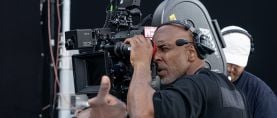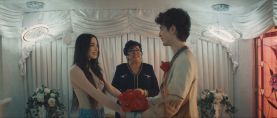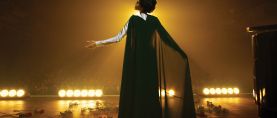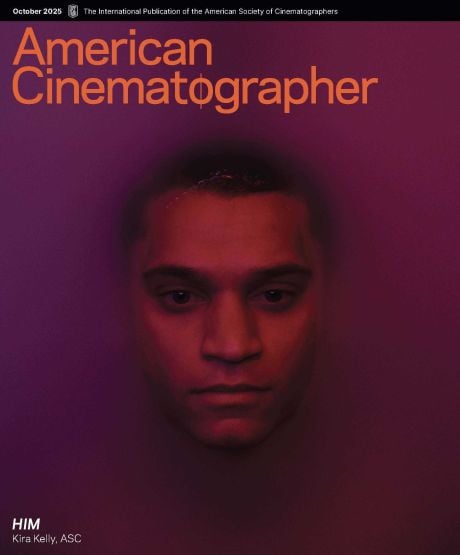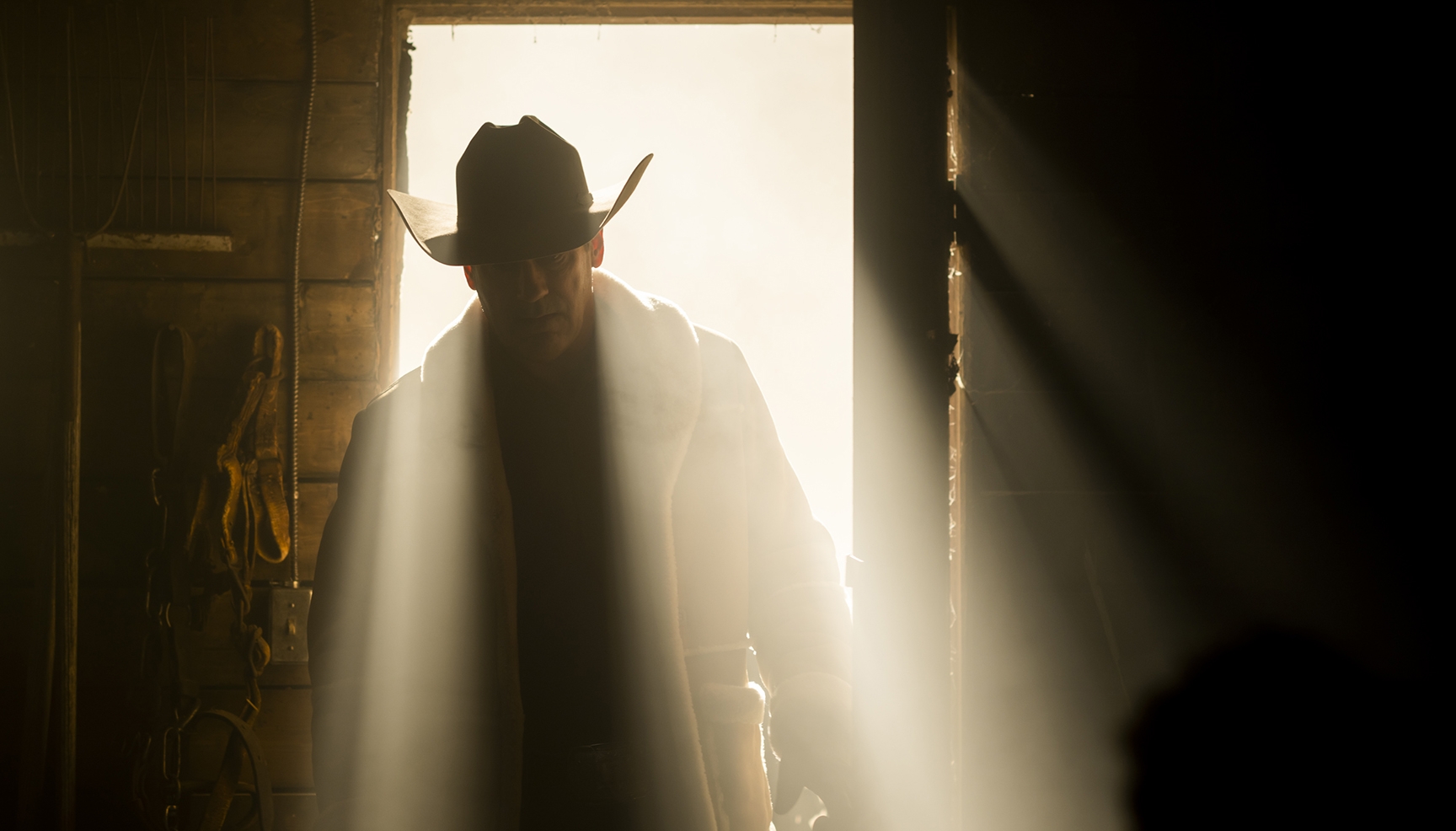
ASC Members Dana Gonzales and Pete Konczal Team Up on Fargo
“By the time we get on set, we’ve spent an enormous amount of time together, walking through things and discussing them.”
Unit photography by Michelle Faye. All images courtesy of FX.
The anthology series Fargo has returned to its Minnesota roots — and Calgary shooting locations — for the show’s fifth season. Circling back following Season 4’s Chicago story of warring gangster factions, the latest chapter features an eruption of violence in a sleepy town after a botched kidnapping attempt reveals that cheerful housewife Dot (Juno Temple) is actually the long-missing wife of abusive North Dakota sheriff Roy Tillman (Jon Hamm).
As the show has unfolded over the years, Dana Gonzales, ASC has been one of the constants behind the scenes — instrumental in creating a new look for each new season’s standalone story, spanning a variety of eras and Midwestern settings. In addition to shooting half of the episodes over the past 10 years, the Emmy-winning cinematographer began directing in Season 4 and served as both a director and producer for Season 5. For the premieres of Season 4 and 5, Gonzales has even juggled the hats of director and cinematographer — but whenever he’s helmed an episode he isn’t shooting, he has turned to Pete Konczal, ASC as director of photography. Their latest collaborations were the Season 5 episodes “The Tiger” and “The Tender Trap.”

American Cinematographer: How did you first meet?
Pete Konczal, ASC: Dana is someone whose work I admired, so I reached out to him.
Dana Gonzales, ASC: I knew about Pete’s work before that. I remember watching Season 3 of House of Cards and noticing that something was different and poetic about one of the episodes. It just hit me a certain way, and I was like, ‘Who shot this?’ It was Pete. That show had great cinematography from beginning to end, but I thought Pete’s episodes were some of the strongest emotionally in a show that tended to be a little colder.

How did you progress to actually working together?
Konczal: Dana first approached me about potentially working together on an episode of Legion, but I wasn’t available at the time. When the opportunity came up to work on Season 4 of Fargo, I jumped at it. Before I started my episodes, I flew out to shadow Dana while he was shooting and [series creator] Noah Hawley was directing. I remember saying to Dana, ‘I really love what you’re doing. I don’t necessarily think the way you do in terms of lighting, but I love how you light.’ And he said, ‘I brought you here for a reason: I saw something in your work. I don’t want you to try to mimic me.’
Gonzales: I cannot light like Pete. I can barely light like me! When I’m looking for a cinematographer, I want them to bring their own touch to it. I’m not attracted to them because it’s like, ‘Finally, a guy who understands what I like!’ [Laughs.]
Konczal: I’ll never forget the first day of shooting we had together on Season 4. It was a scene in an office. Dr. Harvard [played by Stephen Spencer] gets drugged and winds up on the floor, and when he looks up, he sees nurse Oraetta Mayflower [Jessie Buckley]. There was this great moment where Dana looked at me and said, ‘Dr. Harvard sees her, and she’s like an angel of death. Give me something!’ I had these glass rulers in my backpack, and I ran and grabbed them and put them around the lens [to create the effect of wings around Buckley]. It became this iconic shot.
Gonzales: I’m not very rigid in the way I work. I know what I want out of a scene, but I like the process of discovery, and that’s where people who are rigid don’t do well. I need a cinematographer who wants to work that same way and gets excited by that.
Any moments from Season 5 that exemplify that spontaneity?
Gonzales: There’s a scene in ‘The Tender Trap’ where Ole Munch [Sam Spruell] meets Tillman at a stock yard. When we got there, Munch was standing against a silver corrugated wall, and we just started hitting holes into that wall to create shafts of light through the openings.
Konczal: I think it was actually Dana that went over and started ripping that wall apart. [Laughs.] He was like, ‘Pete, what do you have to push through here?’
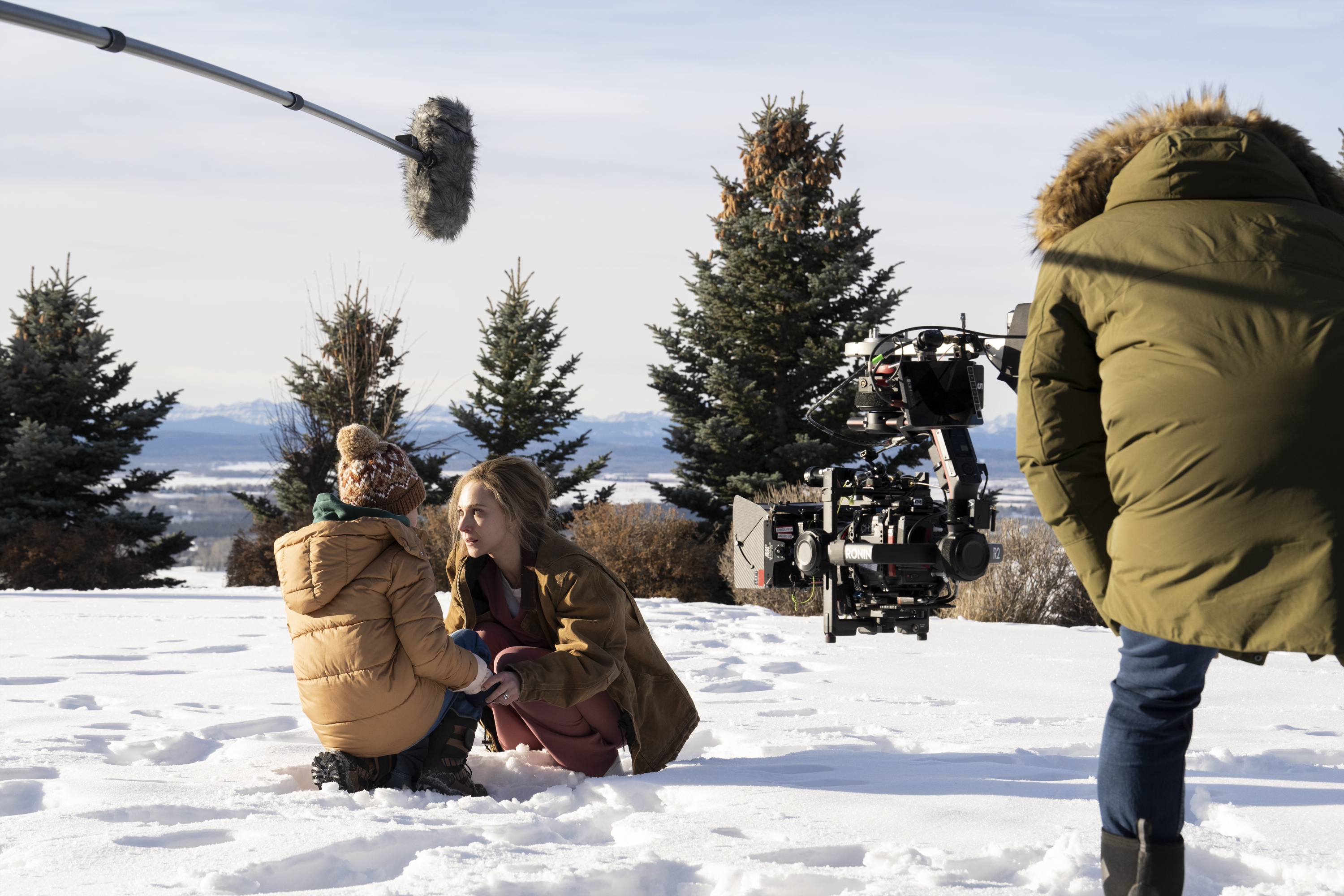
How do you work together when it comes to lighting?
Konczal: Once I see what the tone and the feel of the show is, Dana pretty much just lets me go with the lighting, which is awesome. He’s given me an enormous amount of trust. One thing I did this season that was a little bit different was that I wanted my episodes to always have the feeling of a winter sun, so I lit almost exclusively through windows with 3,200-degree units like Maxi-Brutes and Molebeams. I’m a big fan of using tungsten. For me, they feel more like real sun. There’s a certain warm, continuous quality to them.
Fargo moved to larger-format cameras beginning with Season 4. What prompted that change?
Gonzales: We used the Arri Alexa Mini LF on Season 4 when it was brand-new; they actually took the Minis out of the boxes during prep. We also used the Zeiss [Supreme Prime] Radiance lenses for that season, and they were so new that we had to sign NDAs.
Konczal: For Season 5, you actually tested the Alexa 35.
Gonzales: Yeah, I looked at it while I was prepping and scouting. I remember being at the location for Tillman’s ranch, and I was just like, ‘I need the large format. I need that perspective.’

What made you choose the Canon K-35s and Canon FDs for Season 5?
Konczal: Dana and I had many conversations about how [manufacturers] just don’t make glass like that anymore. I told Dana about some other focal lengths in the FD set, so we brought in the 28mm, which came back to haunt me a little bit because our [A-camera] operator, Mitch Dubin, just fell in love with it. Dana and I liked the 25mm and the 35mm better, but Mitch loved that 28mm. I remember thinking, ‘Dana is going to kill me because I brought that lens on the show, and Mitch always wants to use it.’ [Laughs.]
Gonzales: But you also brought the 45mm, which I had never heard of.
Konczal: The 45mm is actually Yashica glass from the same era. They call it a K-35, but it’s technically Yashica.
Gonzales: That was a new hero lens. Pete had used it on a commercial. I think they’re pretty rare.
Konczal: They are hard to get. It was actually [chief operating officer] Dennis McDonald at Keslow Camera who first recommended that lens to me. I was on a commercial in Vancouver in January 2022, and Dennis said, ‘If you’re up in Vancouver, you have to try this lens out.’
Is it unusual for the camera operator to have that much input on the focal length you choose?
Konczal: Dana likes that — he doesn’t want you to just roll over. Dana would say, ‘I’m thinking the 35,’ and Mitch would say, ‘We’re going to get more if we use that 28mm.’ Sometimes Dana and I might say to Mitch, ‘We think there are three shots here in this part of the scene,’ and Mitch would say, ‘What if I take those shots and make them into one?’ Next thing you know, he’s laying dance floor. It’s a very collaborative process with Dana, and Mitch is encouraged to bring ideas forward. All of us are. The 1st AC, Luke Towers, may come over and say, ‘I saw something over there that’s really great,’ and Dana is always going to listen.
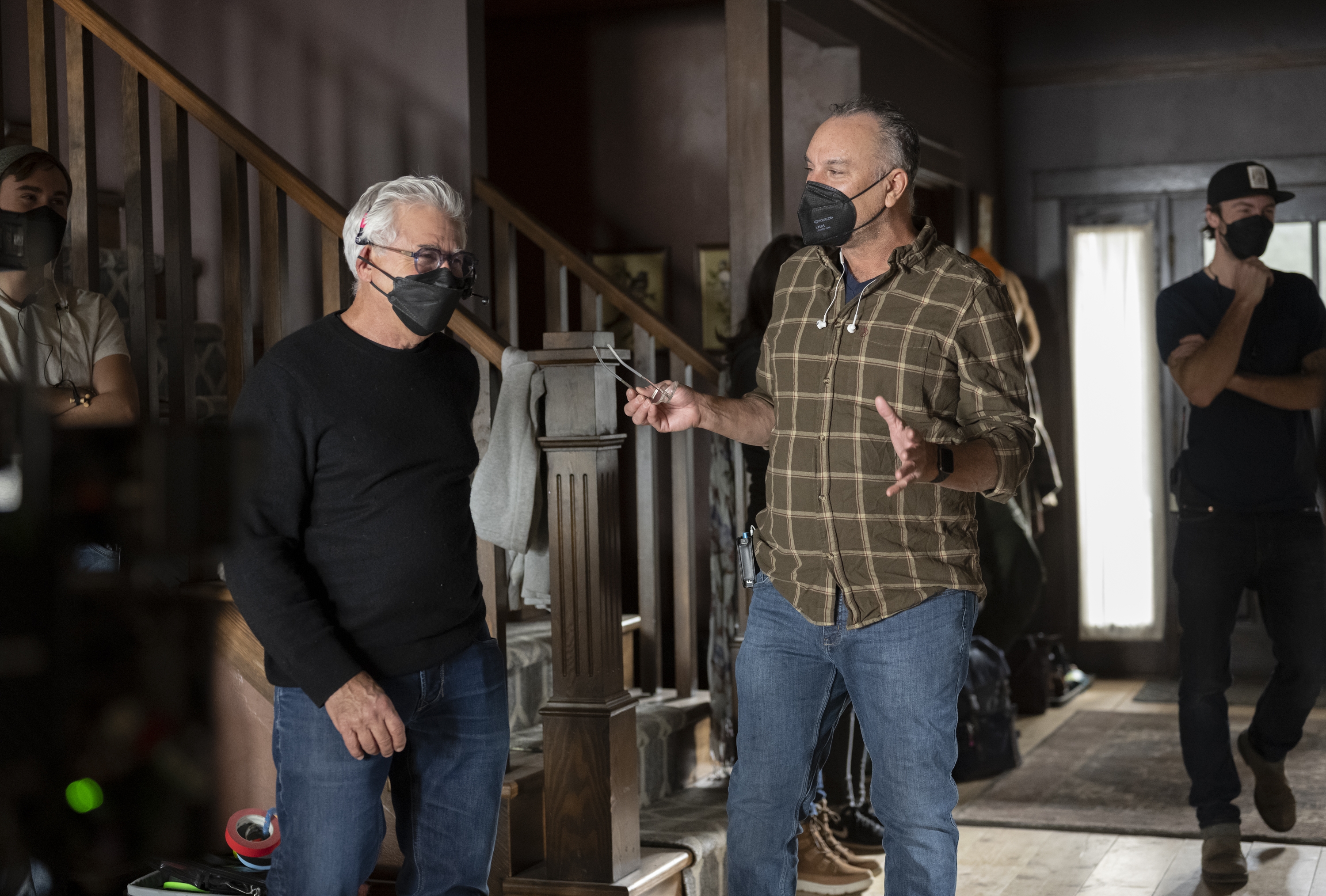
Dana noted he’s not looking for a cinematographer to replicate his own style, so what do the two of you have in common in terms of approach?
Konczal: We both love using filters. We won’t talk about the specifics of the filters we used on Fargo, but I like using filters to change the properties of the image. I always feel like it soaks into your negative. I like altering what the chip is inheriting.
You won’t talk about the filters?
Gonzales: No, but the reason is that I want people to experiment. One thing I can say to any cinematographer is, ‘You’ve got to find your voice.’ Just putting the same filters we used on the same camera isn’t going to create the same result; there’s a lot more to it. There’s colorist [and ASC associate member] Tony D’Amore and what he does in the DI [at Picture Shop]. There’s the wardrobe colors and the production design. All of those things are built around these filters. I encourage people to test and then commit. One of the great things about working with Noah Hawley is that we can commit to things. It’s not, ‘We can try nine other different cocktails later.’ We want to bake it in there.
You both also seem to have an affinity for symmetry and formal compositions.
Konczal: Absolutely. I don’t think I’ve ever said this to Dana before, but he thinks a bit like a graphic designer in the way he frames. There is a symmetry and a balance to his frames.
Gonzales: I was actually a technical illustrator before I got into film, so I’ve spent a lot of time dealing with symmetry.
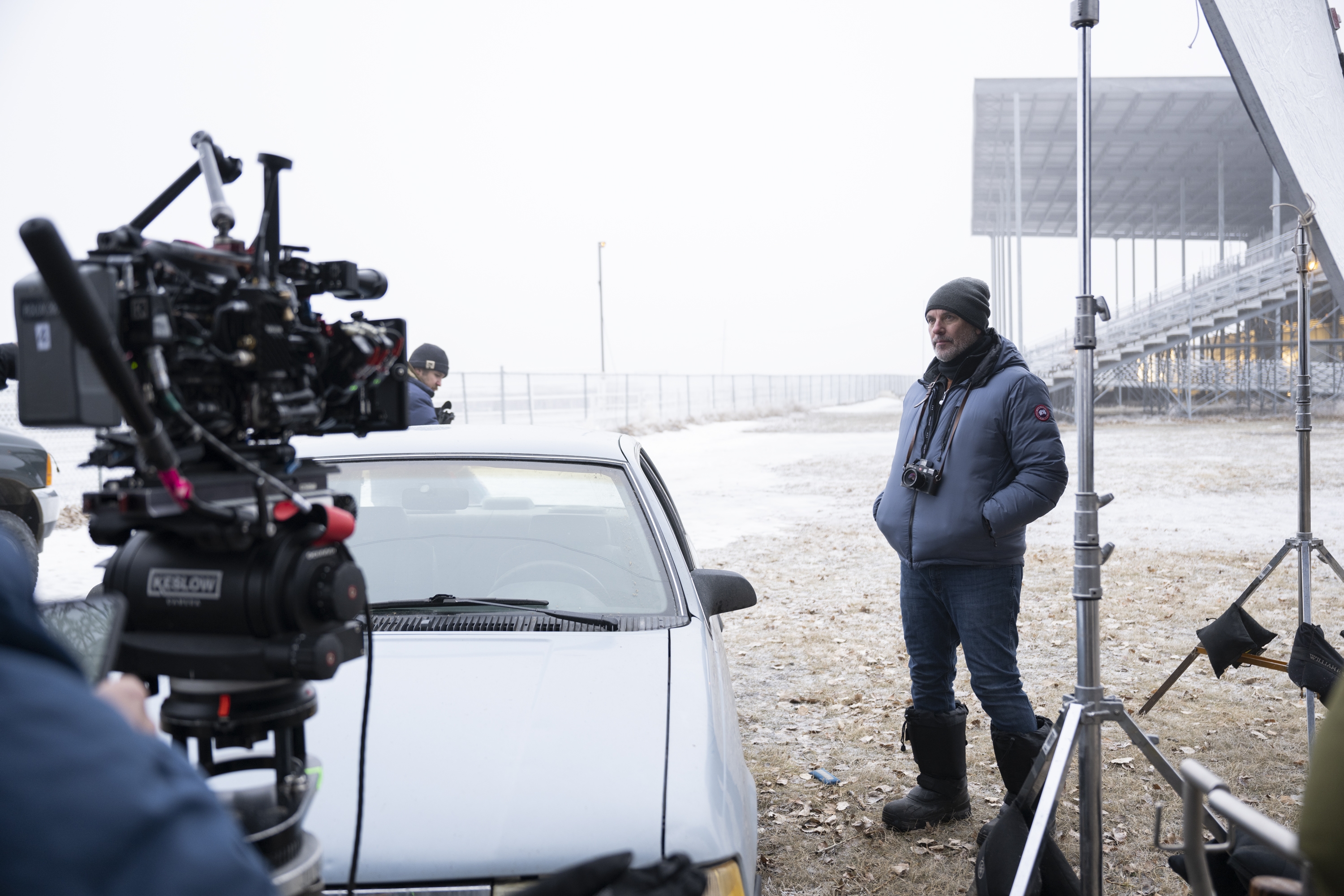
When the camera is rolling, what’s the dynamic between you? Are you at the DIT cart together?
Konczal: Yes, and it’s an absolute joy to be at that station with him. Dana’s a very passionate guy. He is also so diligent in preproduction. By the time we get on set, we’ve spent an enormous amount of time together, walking through things and discussing them. Dana’s DIT, Ryan McGregor, is another amazing collaborator who’s been there across all the seasons of the show.
Gonzales: I’ve definitely got my hands full when I’m directing. I’ve directed and shot [at the same time] before, and I’m not interested in doing that. I don’t need to do it when I can hire somebody like Pete and then concentrate on working with the actors and making sure we’re telling the story correctly. It’s like hiring an operator [rather than operating yourself]. What somebody like Mitch Dubin brings is on a whole other level. We’re getting all this talent together, and that’s where the magic happens.
Konczal: Dana and Mitch are the kind of people that make you better at what you do. Dana will say, ‘I want you to push me, bring me ideas. That’s why you’re here.’ I think that’s the healthiest environment to work in, and he is a great mentor. I feel like I’ve grown so much working with him. It’s almost been like a master class.
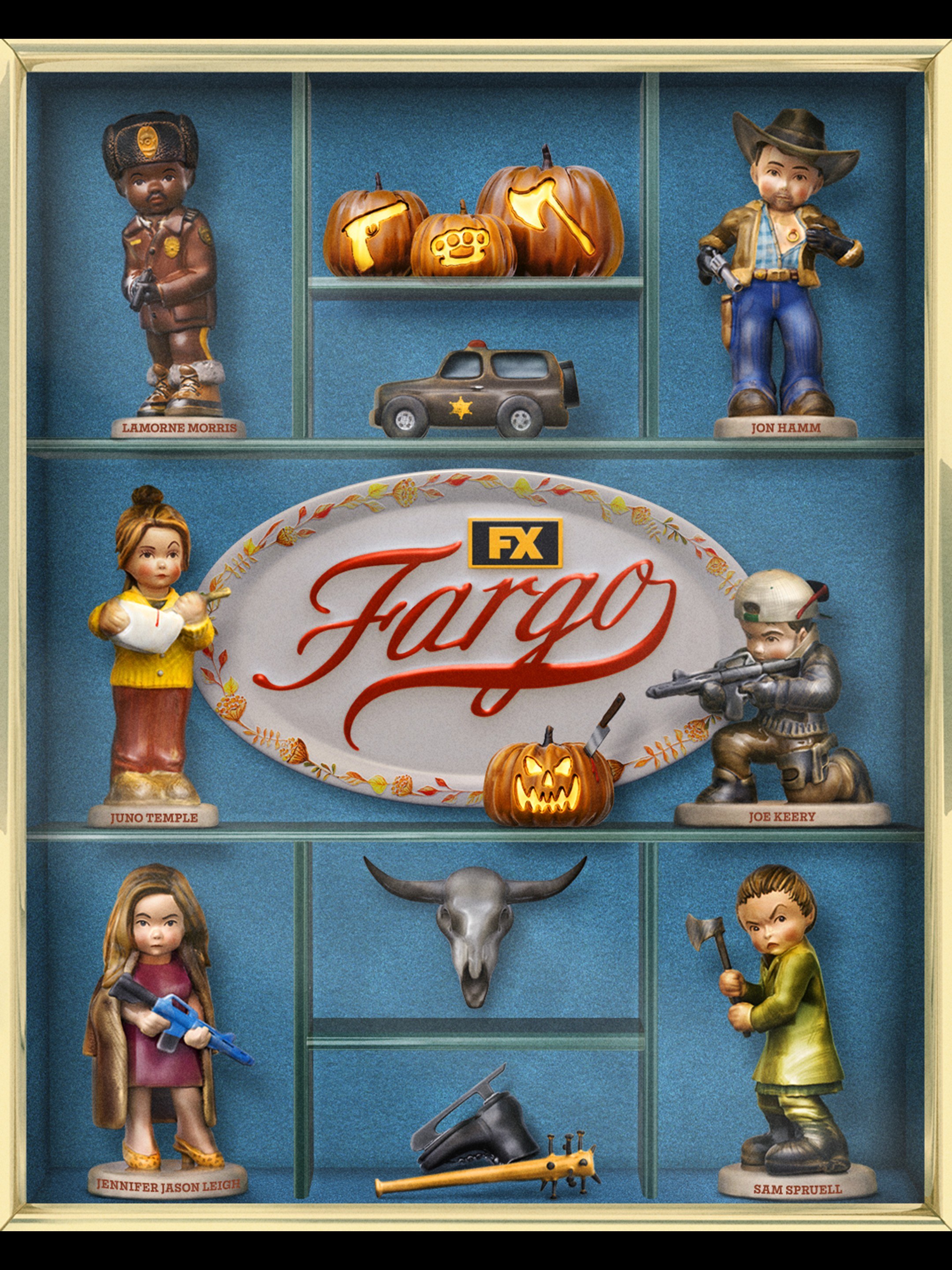
Subsequent to this interview, Gonzales received a 2024 Emmy nomination for his camerawork in the episode “The Tragedy Of The Commons.”
Konczal became a member of the ASC in 2022.
